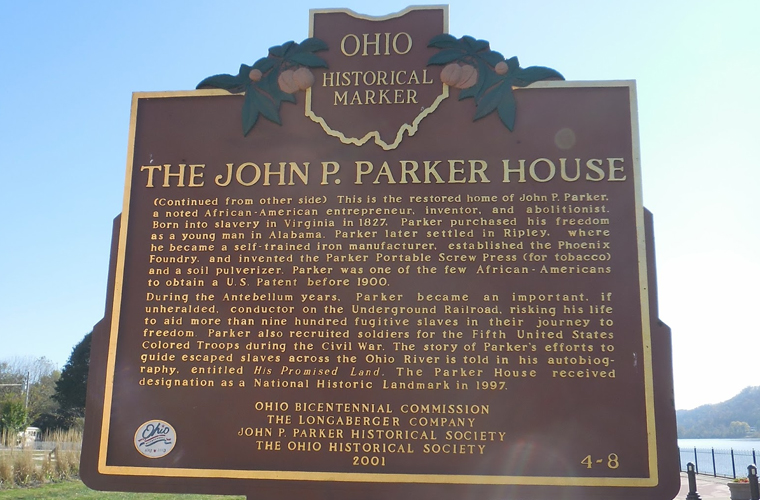John P. Parker, born into slavery around 1827 in Norfolk, Virginia, became a notable inventor, businessman, and Underground Railroad conductor. Renowned for aiding nearly 1,000 enslaved people to freedom between 1845 and 1865, Parker repeatedly crossed the Ohio River from his home in Ripley, Ohio, venturing up to 20 miles into Kentucky to guide fugitives to safety. His bold actions, including a daring rescue of a slave baby held hostage to prevent the parents’ escape, drew attention from Kentucky authorities, who placed a $1,000 bounty on him in the 1850s. To protect himself, Parker publicly denied his Underground Railroad involvement until after the Civil War. His story, recorded in an 1886 manuscript, remained obscure in the Duke University Library Archive until historian Stuart Sprague published it in 1996 as His Promised Land: The Autobiography of John P. Parker, Former Slave, and Conductor on the Underground Railroad.
Sold at age eight, Parker was taken to Richmond, Virginia, and later chain-walked to Mobile, Alabama, where a physician purchased him as a house servant. Despite Alabama’s laws against educating enslaved people, the physician’s sons secretly taught Parker to read and write, fostering his love for Shakespeare and English poetry. In the early 1840s, Parker was apprenticed as an iron molder but faced conflicts with foremen, leading the physician to plan his sale as a farmhand. Instead, Parker convinced Elizabeth Ryder, a patient of the physician, to buy him. She allowed him to earn wages to purchase his freedom, and by 1845, he settled in Ripley, Ohio, after brief stays in Indiana and Cincinnati.
In Ripley, Parker established the Phoenix Foundry, employing 10 workers, and raised a family with his wife, Miranda Bolden, whom he married in 1848. They had eight children. By night, he risked his life guiding fugitives across the Ohio River. After the Civil War, Parker focused on his foundry, becoming the 27th wealthiest person in Ripley by 1870 and amassing one of the city’s largest book collections. In the 1880s, he turned to inventing, securing U.S. patents for an improved tobacco press (1884), a portable tobacco press (1885), and a soil pulverizer (1890). His flour milling products were showcased at the 1884 New Orleans Exposition.
Parker died in Ripley on January 30, 1900. His restored home, now managed by the John Parker Historical Society, offers tours to honor his legacy as a conductor, entrepreneur, and inventor.

